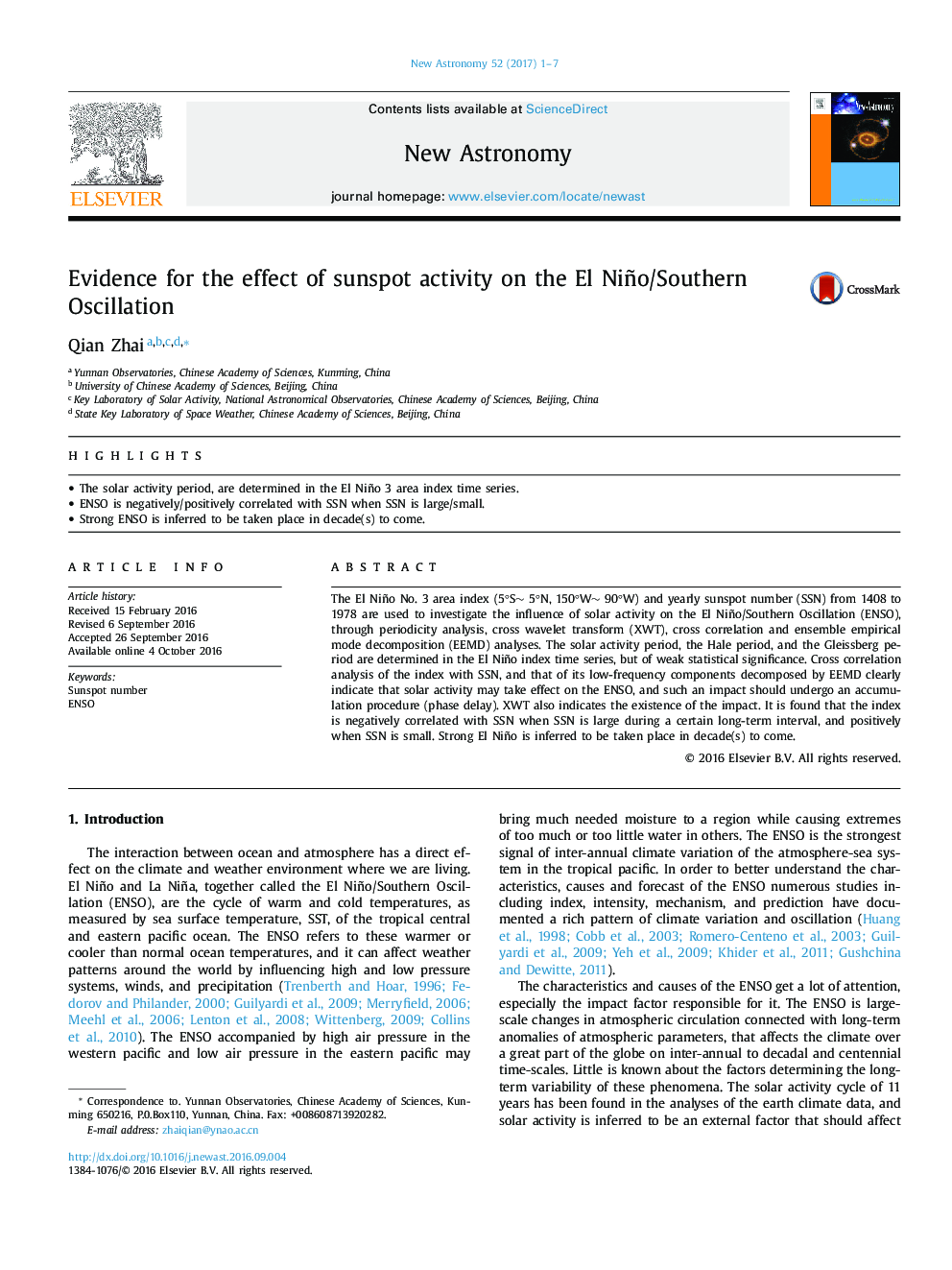| Article ID | Journal | Published Year | Pages | File Type |
|---|---|---|---|---|
| 5487824 | New Astronomy | 2017 | 7 Pages |
â¢The solar activity period, are determined in the El Niño 3 area index time series.â¢ENSO is negatively/positively correlated with SSN when SSN is large/small.â¢Strong ENSO is inferred to be taken place in decade(s) to come.
The El Niño No. 3 area index (5°Sâ¼ 5°N, 150°Wâ¼ 90°W) and yearly sunspot number (SSN) from 1408 to 1978 are used to investigate the influence of solar activity on the El Niño/Southern Oscillation (ENSO), through periodicity analysis, cross wavelet transform (XWT), cross correlation and ensemble empirical mode decomposition (EEMD) analyses. The solar activity period, the Hale period, and the Gleissberg period are determined in the El Niño index time series, but of weak statistical significance. Cross correlation analysis of the index with SSN, and that of its low-frequency components decomposed by EEMD clearly indicate that solar activity may take effect on the ENSO, and such an impact should undergo an accumulation procedure (phase delay). XWT also indicates the existence of the impact. It is found that the index is negatively correlated with SSN when SSN is large during a certain long-term interval, and positively when SSN is small. Strong El Niño is inferred to be taken place in decade(s) to come.
